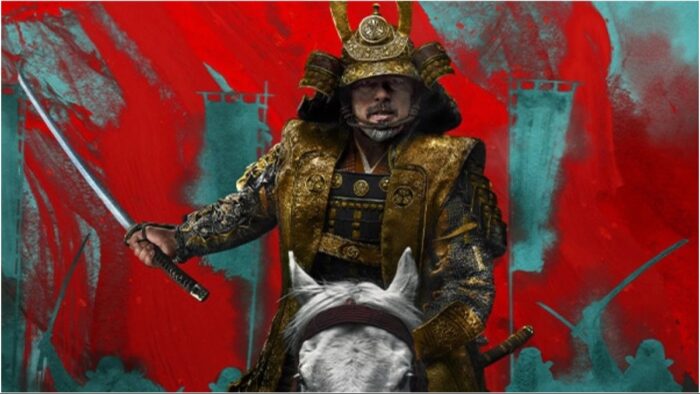Published in Japan Forward May 14th 2024
The new Shōgun miniseries streaming on Hulu, Disney and FX appears to have been a tremendous critical and commercial success. It scored 99% on the Rotten Tomatoes review aggregator and attracted nine million viewers in the first six days of availability. I can testify to its popularity, having overheard several people discussing it in bars and trains in Europe and Japan.
The appeal is obvious. In the words of The Spectator magazine, there are “ruthless warlords, shifty minions, and sundry bandits, samurai, scheming Jesuit priests, lubricious geishas and outrageously deft assassins. If you’re into… swashbuckling action and eye-wateringly lavish recreations of early 17th-century Japan – and who isn’t? – then this is definitely your cup of sake.”
Yet “Shōgun” is not just a slickly-made exotic historical drama. It tells a story about the relationship between Japan and the West that is particularly powerful because it is to a significant degree based on fact. William Adams, the prototype for the fictional John Blackthorne, was a navigator who sailed to Japan after a hazardous trip around Cape Horne and across the Pacific on a Dutch ship.
The first Briton to set foot in Japan, perhaps in East Asia, initially he was thrown into jail as a suspected pirate, but then became an advisor to Ieyasu, the warlord who founded the Tokugawa Shōgunate which, from 1603, was to last over two hundred and fifty years.
Adams learned to speak Japanese and write the hiragana script and was considered sufficiently valuable to be given the status of hatamoto (“flag bearer”), which came with an estate and ninety peasant families to work it. Though not technically a samurai, he was allowed to bear two swords as samurai did. Altogether, he had four residences in different parts of Japan.
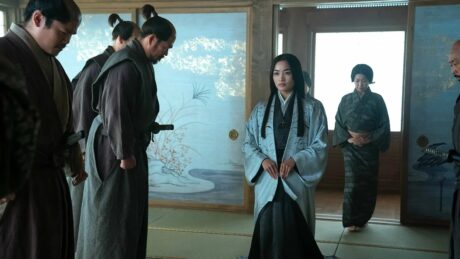
Enter Lady Mariko
By this stage, he was already a geopolitical actor. According to historian Frederik Cryns, Adams warned Ieyasu that “the Spanish always send missionaries first to convert a large number of the country’s people to Christianity, and then they conspire with the Christians to conquer the country and make it the property of the King of Spain.” Whether these words were influential is impossible to know, but Christianity was proscribed soon after and Adams was blamed for the oppression of Japanese Catholics.
Four years after his death in 1620 the Spanish were banned from Japan, leaving his friends the non-proselytising Dutch as the sole trading link with the West for the next few centuries. Adams, who had sailed with Sir Francis Drake against the Spanish Armada, would have been delighted.
After marrying a wealthy merchant’s daughter and having two children, matching his family back in London, Adams grew less keen to return to his native land. When agents of the British East India Company arrived in Japan, they considered that he had “gone native”, preferring the Japanese to his own countrymen.
He certainly respected Japanese culture, stating in a letter to overseas friends that the Japanese were “of good nature, courteous beyond measure and valiant in war… They are governed in great civility. I mean not a land better governed in the world.”
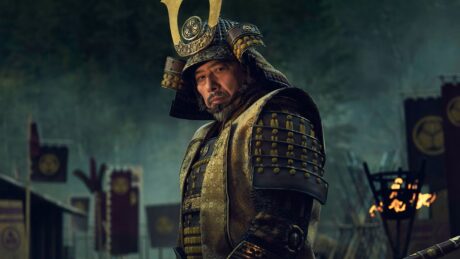
Toranaga
Adams died in Japan four years after the death of his benefactor Ieyasu. The people who inhabited the estate he had been gifted held memorial services in his honour for the next 260 years, but otherwise in both Japan and Britain he was forgotten.
It was only after the Meiji Restoration of 1868 brought an influx of foreigners into Japan that the dilapidated tomb of Adams and his wife were discovered by a trader residing in nearby Yokohama. In 1887, The Duke of Connaught, son of Queen Victoria, contributed funds for its upkeep while on a visit – thereby kickstarting William Adams’s new career as a symbol of Anglo-Japanese partnership.
With the Anglo-Japanese alliance of 1902 and Japan’s world-shaking military victory over Russia in 1905, Adams was the right man in the right place, even though he had been dead for three hundred years. In the 1980 book, “Learning From “Shōgun”, Professor Henry D. Smith of Columbia University notes how Adams was described by a contemporaneous speaker at the London Japan Society.
“A good Briton, and very probably a great Briton; a man who never did aught in Japan to disgrace his country’s flag; a man who, on the contrary, taught the Japanese much that was new and useful—a man who taught them how to build ships in the European way, and indeed may well be said to have founded that glorious Japanese Navy which has just given us again proof of its excellence. It is, perhaps, not too great a stretch of imagination to picture the spirit of Will Adams looking down from his grave on the Bay of Yokosuka, the Chatham of Japan, on the splendid battleships and cruisers that lie there flying the flag of the Rising Sun.”
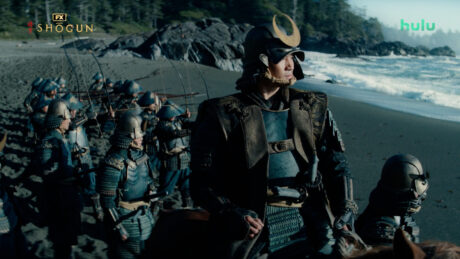
Ready for anything
World Wars and the clash of empires put an end to Adams’s role as an emblem of Anglo-Japanese co-operation, with both sides suffering severe diminution of status by the end of hostilities. Fittingly, Adams now had a much smaller task, helping the slow and delicate process of reconciliation.
Festivals and small memorial events were held as early as 1946. British poet Edmund Blunden, six times a candidate for the Nobel Prize for literature, was in Japan after the war and wrote a poem to be inscribed on a newly erected monument to Adams in Ito. Addressed to the citizens of the small city one hundred miles from Tokyo where Adams built boats, it contains the following lines –
I know his home in England, and I know
At last his home by the Pacific’s flow
And am most happy, thinking of that man,
Who first united England and Japan
Blunden, who also composed Tokyo University’s rugby song, was not to know that Adams would take on a much bigger role, one that was consonant with post-war geopolitical realities: uniting Japan not with England, but with America. And the medium would not be festivals, poetry and memorial tablets, but the output of the enormous American entertainment industry, with its blockbuster novels, movie stars and dominant TV networks capable, in the mid-1970s, of running a new, big budget product, the miniseries.
ENTER CLAVELL
Like Adams himself, James Clavell was the right man in the right place at the right time. Born into a British military family, he had become a successful scriptwriter and director in Hollywood before turning to novel-writing. That must have given him an instinctive understanding of character arcs and helped make his stories work so filmable. He was also obsessed with East Asia and set five of his six his best-sellers there, “Shōgun” being by far the most successful.
The metanarrative of the novel is the journey from cultural conflict to mutual instruction and mutual attraction. Clavell had raw real life experience of what that meant, having been a prisoner of the Japanese, like Adams. Unusually, but again like Adams, the eighteen-year-old Clavell came away from his spell in Singapore’s notorious Changi jail with enhanced respect for the Japanese.
“I just admire the Japanese,” he explained years later. “It’s possible to admire an enemy. The relationship of conqueror and conquered can be an intriguing one. It doesn’t necessarily lead to hate.”
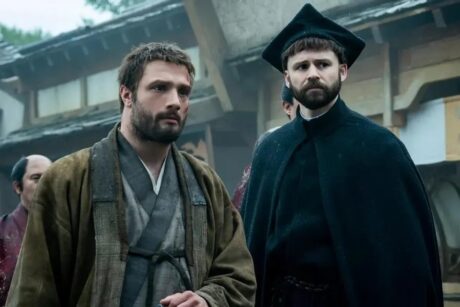
Blackthorne with Jesuit priest
The book, published in 1975, was a sensation, selling six million copies over the next five years. Professor Smith, writing in 1980, claimed that “the American consciousness of Japan has grown by a quantum leap because of this one book. In sheer quantity, “Shōgun” has probably conveyed more information about Japan to more people than all the combined writings of scholars, journalists, and novelists since the Pacific War.”
And that was just months before the broadcast of the first “Shōgun” miniseries starring Richard Chamberlain and Toshiro Mifune. In that pre-streaming era, if you wanted to watch it you had to sit down in front of the TV for five consecutive nights, adding up to twelve hours of viewing. That is exactly what people did. One third of all American television sets tuned into it at least some of the time, giving NBC the highest weekly ratings in its history.
Why? Clavell’s story-telling brilliance was important but so was the timing. The 1970s were a miserable decade for the U.S.A., starting with defeat in Vietnam, continuing with the Watergate scandal, stubbornly high inflation and a deep bear market for stocks, then ending with the Soviet invasion of Afghanistan.
Meanwhile, Japanese products – autos and all kinds of consumer electrical devices – were suddenly everywhere. In 1979, Japan scholar Ezra Vogel published “Japan as Number One: Lessons for America”, a book that set out in facts what Clavell had suggested in fiction – that there was much to learn from Japan.
As the Japanese economy boomed in the 1980s and trade frictions became increasingly antagonistic, Clavell’s self-described “passionately pro-Japan” story faded in significance. Nonetheless, from a Cold War perspective having the world’s second largest economy as an ally was a huge benefit. Conversely, the end of the Cold War coupled with the collapse of Japan’s disastrous bubble economy put Adams temporarily out of business.
Now we have what looks like a new Cold War, and serendipitously the Japanese economy has emerged from its long deflationary morass. Judging by the amount of overseas attention, Japan is back – and so is John Blackthorne, the fictional avatar of William Adams.
The 2024 version of “Shōgun” is much better than its predecessor, as it should be considering the budget of $250 million was treble the size. There is much more attention to the manoeuvring of the warlords and less to Blackthorne’s love life.
The presence of veteran Japanese actor Hiroyuki Sanada among the show’s producers, in addition to taking the main role, must have raised the authenticity quotient. Whereas the film version of the 1980 miniseries was considered exploitative and unrealistic by Japanese audiences, the 2024 iteration has been well-received.
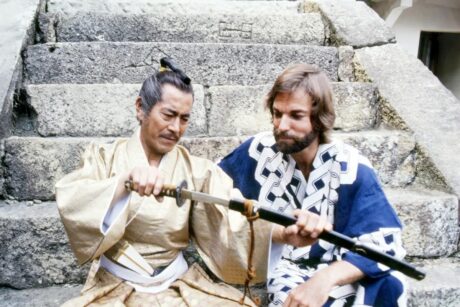
Toshiro Mifune & Richard Chamberlain as Toranaga & Blacksthorne
Clavell’s Japanophilia is mirrored in a very contemporary way. Johnathan Van Tulleken, one of the directors of the show, declares in a podcast how committed he was to avoiding the “white saviour” trope so common in Western dramas about Japan. “We are the savages, we are the barbarians,” he says, and explains how he placed the Jesuits in dark interiors, eating greasy meat and letting dogs lick their hands, whereas the Japanese characters eat clean food in the open air.
The show is an American product, but it feels half Japanese with nearly all the dialogue in Japanese. Geopolitically, this makes sense since the U.S. is much more dependent on Japan than ever before. Its status as the global superpower is dependent on its presence in Southeast and East Asia, an increasingly sophisticated economic area that is home to billions.
But in today’s multipolar world, it can no longer go it alone. It needs strong allies that share the same interests and are not merely passive, as Japan was in the 1970s and 1980s.
At the same time, Japan’s dependence on the U.S. has also never been greater. For the last 2,000 years it has successfully avoided the fate of being sucked into the continental sphere of influence, helped by Chinese weakness and the natural barriers of an island nation.
Indeed, the failed Mongol-Korean invasions of Japan in the 13th century parallel the failed Spanish invasion of England in 1588, with both victories being ascribed to divine intervention and spawning myths of invincibility. Now, though, China is strong and, natural barriers can be breached by technology.
The mutual reliance is creating a binding relationship. No surprise then that there is talk of a second season of “Shōgun” which would presumably take the story much further than the timeline of Clavell’s book, which covered a mere year or so.
So William Adams is back in action. So far he has been on the winning side, helping facilitate the destruction of the Spanish Armada, encouraging the removal of the Portuguese and Spanish missionaries from Japan, cheering on the Japanese victory over Russia and being on the winning side of the Cold War. His new mission could be the longest and toughest yet.
